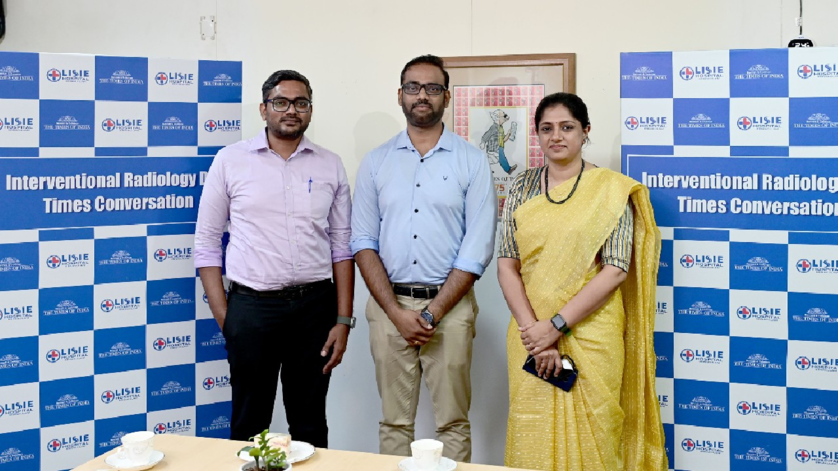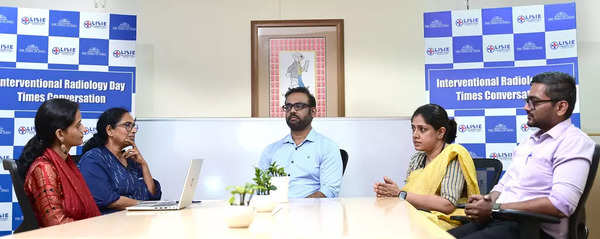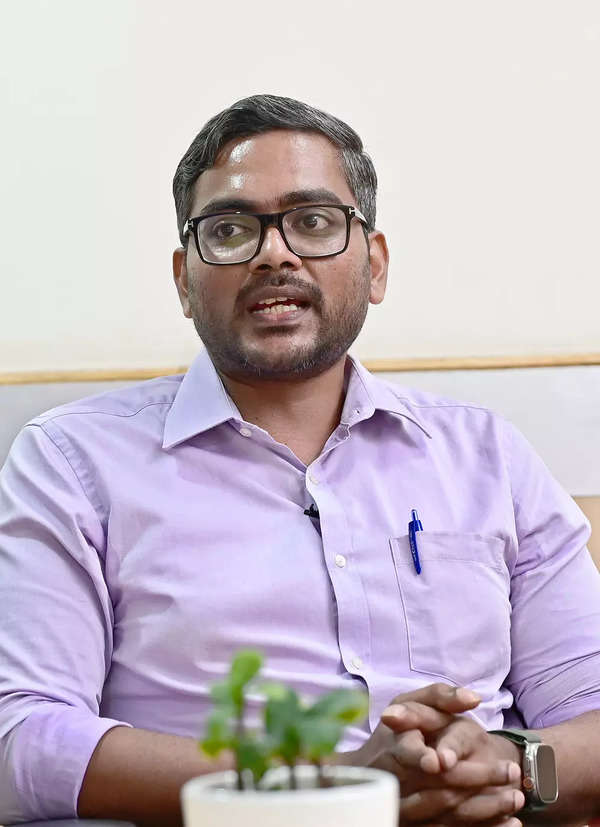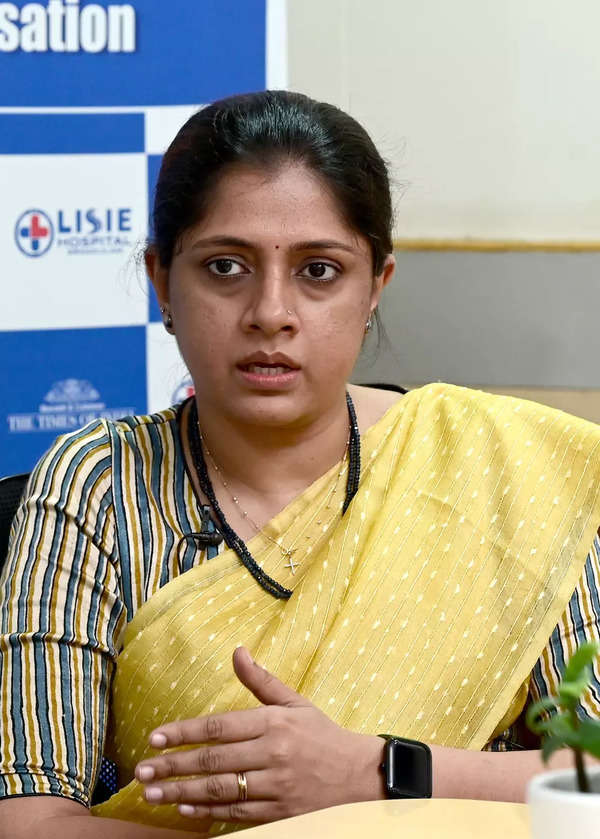
Interventional radiology is revolutionising treatments for multiple illnesses, allowing physicians to treat the body with minimal invasiveness. The latest advancements are positioning interventional radiology as a critical component of modern healthcare, especially due to its growing role in managing diabetes-related complications.Few innovations in medical history have had as lasting an impact as the discovery of penicillin and X-rays. When Sir Alexander Fleming found penicillin, it gave humanity a powerful weapon to combat infections, saving countless lives. Similarly, Sir Wilhelm Conrad Röntgen’s discovery of X-rays unlocked a window into the human body that changed diagnostics forever. What began with basic X-ray imaging has evolved into sophisticated tools like CT scans, PET-CT, and cath labs, which now play an indispensable role in modern healthcare.
Yet, radiology’s power extends beyond imaging. Interventional radiology has transformed these technologies from diagnostic tools into precise, targeted treatments, enabling physicians to address diseases with minimal impact on surrounding tissues. This shift has placed interventional radiology at the forefront of modern medicine, with applications across nearly all medical fields to enhance patient care.
As the International Day of Radiology falls on November 8 and World Diabetes Day falls on November 14, the opportunity presented itself to discuss one of the most essential contributions of radiology: in managing diabetes and diabetic foot complications.

Fostering relevant discussion
In the lead-up to the International Day of Radiology, four doctors from Lisie Hospital gathered for a thought-provoking panel discussion hosted by The Times of India at the newspaper’s Kochi office. As part of the Times Conversations series, this event aimed to bring together key voices on various issues that have wide-reaching societal impact.
The panel included Dr Lijesh Kumar, Head of Department and Senior Consultant in Endovascular and Interventional Radiology; Dr Rontgen Rajakumar, a diabetic foot and podiatry consultant; and Dr Geena Susan George, an endocrinologist—all at Lisie Hospital, Ernakulam. Their discussion delved into the significance of interventional radiology, with each doctor sharing compelling insights from their fields.
A trio that works in tandem
The interventional radiologist, the endocrinologist, and the podiatrist together form the troika of diabetic foot management. The collaboration between these three specialists is essential in managing complex diabetic foot cases. This trio works in tandem to provide comprehensive care, addressing the multifaceted challenges associated with diabetic foot complications.
Dr Rontgen explains, “When a patient comes to us, they present with different kinds of problems. Some come with severe pain in the foot, while others arrive with ulcers, and so on. We need to assess what the basic cause of the pain is. If we determine that the underlying cause is ischemia or poor blood flow, we must refer them to a radiologist at least to get a Doppler done and check if the vascularity is good. We also assess the ulcer to determine whether it is an ischemic ulcer or a varicose ulcer. Before we touch any wound, we check the vascularity, which is where the interventional radiologist comes in. Patients with a diabetic foot often have deranged blood sugar levels, so it is essential to have a multidisciplinary team, including an endocrinologist. The sugar levels need to be under control before we proceed with any surgical procedure.”
Are Indians predisposed to diabetes?
India is often referred to as the diabetes capital of South Asia, a title that reflects the high prevalence of the disease in the country. The underlying reasons for this distinction warrant further exploration. Are we all susceptible to diabetes? Understanding the contributing factors is essential for addressing the diabetes epidemic effectively. Dr Geena states that the high incidence of diabetes in India is largely due to genetic factors. She says, “Ethnicity predisposes individuals to develop insulin resistance, and in the Indian population, this tendency is notably high, increasing the likelihood of developing type 2 diabetes. It is not merely the presence of insulin in the body that matters; rather, the insulin does not function properly. Indians typically develop diabetes at least a decade earlier than the global average, which results in a longer duration of living with the disease and, consequently, more complications. Rapid urbanisation has also played a role; ten years ago, the prevalence of fast food in diets was much lower. This change in lifestyle, combined with a lack of physical activity, contributes to the rising rates of diabetes. Genetic predisposition remains a significant factor.”
Family history and diabetes
If you have a strong family history of diabetes, is it inevitable that you too will be diabetic one day? Dr Geena, says “If there is a strong family history, the risk of developing diabetes is higher, but it is not 100 percent. Being aware of such a history allows for caution from the initial stages. A Body Mass Index (BMI) check should be conducted, and it is advisable to maintain a BMI of less than 25. Adopting a healthier lifestyle is essential. The recommendation is to engage in 150 minutes of aerobic activity per week and to avoid fried carbohydrates and sweetened beverages while relying on whole grains. It is important to avoid sedentary behaviour and smoking, as well as to screen for diabetes early, starting at the age of 35. If you undergo an HbA1c test, you can determine if you are prediabetic, which presents a valuable opportunity for intervention. Treat this as a warning signal; if you adjust your lifestyle accordingly, you can prevent the progression of diabetes over time. It is not inevitable that you will develop diabetes.”
Saving limbs
Dr Rontgen points out an alarming statistic: data indicates that 50 percent of patients with diabetes develop foot ulcers, and among those, 25 percent will progress to infected ulcers. Furthermore, it is estimated that about 10 percent of patients with infected ulcers may require amputations. Dr Geena offers some tips for foot care, “Use appropriate footwear and inspect your feet on a day-to-day basis. Take care of your feet as you would your face. Look for blisters. There can be deformities so you must have customised footwear.”
The common route of angioplasty does not always lead to limb salvage, and there are various reasons why it may fail for some. Dr Lijesh explains that this is a crucial point that must be communicated to patients before and after the procedure. He says, “Patients should have realistic expectations regarding the outcomes. Worldwide data indicates that 90 percent of limbs can be salvaged following comprehensive treatment, which includes angioplasty and diabetic foot management. However, many patients present with such advanced diabetic foot conditions that they may be beyond salvage, despite the best efforts. For some individuals, amputation may be unavoidable, with around 10 percent facing this outcome.” According to him, it is important to reassure those undergoing amputation that it is not the end of the world; life continues. Hospitals are equipped with physical medicine departments that can assist patients in walking again with prosthetic legs.
AI and interventional radiology
The latest treatment modalities in interventional radiology are evolving rapidly, particularly with the integration of artificial intelligence (AI). Dr Lijesh explains that interventional radiology is the most technology-dependent branch of medicine. AI is set to transform this field, especially in areas lacking access to interventional radiologists. For example, AI-based catheters are now available for treating pulmonary embolism, a serious condition caused by large clots in the pulmonary arteries, which can lead to death, especially following hospital procedures. Timely detection allows for the removal or dissolution of these clots. New catheters can now aspirate clots while minimising blood loss by engaging only when they latch onto a clot. AI’s potential to change interventional radiology represents a pivotal shift in treatment capabilities. This advancement in technology will significantly enhance patient outcomes and revolutionise medical practices across the board, feels Dr Lijesh.
Diabetic nephropathy and angioplasty
In the case of patients with damaged kidneys or diabetic nephropathy, a small subset—approximately 5 percent—may have no arteries that can be opened. This is particularly true for patients with calcified vessels.
https://fb.watch/vJrUbE53XV/
Dr Lijesh offers a clarification, “The vast majority of cases with dense calcification also respond well to angioplasty, while a few cases require advanced techniques like atherectomy or intravascular lithotripsy. In very few patients with dense calcification, angioplasty may fail as vessels are completely blocked, up to the toes.”
Patients with kidney disease often have densely calcified or extremely hard arteries. The challenge lies in poor kidney function, as angioplasties typically require the use of contrast agents and multiple medications. For patients who are not on dialysis, carbon dioxide angiography can be used to reduce the burden on the kidneys, but this technique is effective only for limited use. Eventually, to achieve better visibility, the use of contrast agents becomes necessary, informs Dr Lijesh.
The difference in operating on a patient with good versus poor blood flow is significant. Dr Rontgen notes that gangrene occurs when blood flow is completely absent, leading to tissue death. Operating on a toe without adequate blood flow will result in worsening conditions, highlighting the need for proper vascular assessment. In cases where sepsis has occurred, immediate surgery is necessary; otherwise, angioplasty can be considered first. Dr Lijesh emphasises the urgency of conducting a Doppler test upon noticing an ulcer or gangrene. According to him, adequate blood flow is crucial for successful treatment outcomes. He states, good blood flow is the best medicine.

Interventional radiology is the most technology-dependent branch of medicine. AI is set to transform this field, especially in areas lacking access to interventional radiologists. For example, AI-based catheters are now available for treating pulmonary embolism, a serious condition caused by large clots in the pulmonary arteries. Timely detection allows for the removal or dissolution of these clots. New catheters can now aspirate clots while minimising blood loss by engaging only when they latch onto a clot. AI’s potential to change interventional radiology represents a pivotal shift in treatment capabilities. This advancement in technology will significantly enhance patient outcomes and revolutionise medical practices across the board.
-Dr Lijesh Kumar, Head of Department and Senior Consultant in Endovascular and Interventional Radiology.

When a patient comes to us, they present with different kinds of problems. Some come with severe pain in the foot, while others arrive with ulcers, and so on. We need to assess what the basic cause of the pain is. If we determine that the underlying cause is ischemia or poor blood flow, we must refer them to a radiologist at least to get a Doppler done and check if the vascularity is good. Patients with a diabetic foot often have deranged blood sugar levels, so it is essential to have a multidisciplinary team, including an endocrinologist.
– Dr Rontgen Rajakumar, a diabetic foot and podiatry consultant

Ethnicity predisposes individuals to develop insulin resistance, and in the Indian population, this tendency is notably high, increasing the likelihood of developing type 2 diabetes. It is not merely the presence of insulin in the body that matters; rather, the insulin does not function properly. Indians typically develop diabetes at least a decade earlier than the global average, which results in a longer duration of living with the disease and, consequently, more complications. Rapid urbanisation has also played a role; ten years ago, the prevalence of fast food in diets was much lower. This, combined with a lack of physical activity, contributes to the rising rates of diabetes – Dr Geena Susan George, endocrinologist
Disclaimer: The views/suggestions/opinions expressed in the article are the sole responsibility of the experts and the brand concerned. This should not be considered a substitute for medical advice. Please consult your treating physician for more details. This article has been produced on behalf of BCCL by Times Internet’s Spotlight team.




